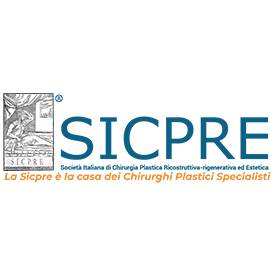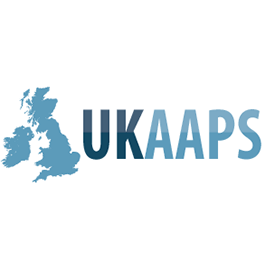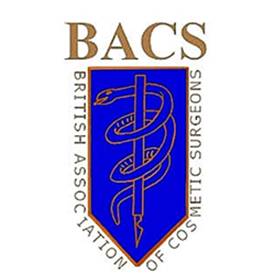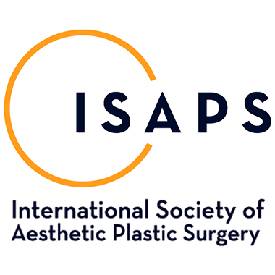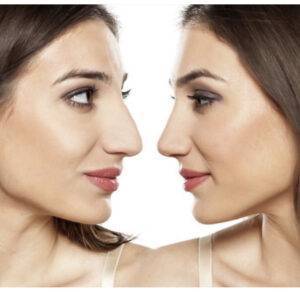
Are you looking for a trusted Rhinoplasty Manchester Service? Dr. Frati is a globally recognised and respected figure in the field of cosmetic surgery, trusted by celebrities and influencers from around the world. He is proud to offer some of the most advanced and successful rhinoplasty treatments available today.
Call Dr Frati for your Free Rhinoplasty Manchester Consultation
Rhinoplasty, which is the medical term for nose reshaping or ‘nose job’ surgery, involves making alterations to the shape and size of the nose. This can involve reducing or reshaping the bridge of the nose, narrowing the nostrils or changing the shape of the tip. With modern scientific advances, rhinoplasty can also be used to correct any breathing difficulties caused by structural problems within the nose.
Find out about our Rhinoplasty before and after pictures.
Interested to know more about what Dr. Frati can do for you?
Rhinoplasty Manchester Before and After
Rhinoplasty Manchester with Dr. Frati
If you are looking for further information regarding nose jobs, please take some time to explore the content on our website. Alternatively, Dr. Frati is always available to offer his expert advice during a private consultation – here he can provide tailored advice based on his extensive experience in the field of plastic surgery. With Dr. Frati’s help, you can be confident that you are making an informed decision with regards to having rhinoplasty performed and will be in safe hands throughout all stages of the process.
At our clinic we understand that making any kind of medical decision can be daunting and so strive to create an environment for our patients where they feel comfortable and secure discussing their questions or concerns about rhinoplasty and other treatments we provide. We believe that everyone should have access to reliable information when considering such an important step so have made sure our website provides both accurate facts alongside helpful resources for those interested in learning more about what cosmetic surgery entails.
Dr. Frati will help make your Rhinoplasty Manchester journey as easy and as comfortable as possible. Why not ring us on 0161 327 139 or book your consultation to see?
Rhinoplasty Manchester with Dr. Frati
If you are looking for further information regarding nose jobs, please take some time to explore the content on our website. Alternatively, Dr. Frati is always available to offer his expert advice during a private consultation – here he can provide tailored advice based on his extensive experience in the field of plastic surgery. With Dr. Frati’s help, you can be confident that you are making an informed decision with regards to having rhinoplasty performed and will be in safe hands throughout all stages of the process.
At our clinic we understand that making any kind of medical decision can be daunting and so strive to create an environment for our patients where they feel comfortable and secure discussing their questions or concerns about rhinoplasty and other treatments we provide. We believe that everyone should have access to reliable information when considering such an important step so have made sure our website provides both accurate facts alongside helpful resources for those interested in learning more about what cosmetic surgery entails.
Dr. Frati will help make your Rhinoplasty Manchester journey as easy and as comfortable as possible. Why not ring us on 0161 327 139 or book your consultation to see?
Types of Rhinoplasty Procedure
There are many types of Rhinoplasty available in Manchester, and it is vitally important that you consult with Dr. Frati so you can discuss your array of options. We have highlighted the main rhinoplasty procedures below with a brief description of each technique.
Open Rhinoplasty
Open rhinoplasty is a surgical technique employed for nasal reshaping (rhinoplasty) in which the surgeon creates an incision on the external skin of the nose, typically along the columella – the slender strip of tissue that separates the nostrils. This method is also known as the "external" or "open structure" rhinoplasty technique and differs from closed rhinoplasty in London, in which all incisions are made internally within the nostrils, resulting in no external scarring.
Here's a concise explanation of how Open Rhinoplasty in London works:
1. Incision: In open rhinoplasty, a small incision is made on the columella, the fleshy strip between the nostrils. This external incision provides the surgeon with improved visibility and access to the internal nasal structures.
2. Visualisation: By lifting the nasal skin and tissue, the surgeon gains a direct and clear view of the nasal cartilage and bone. This enhanced visibility is particularly beneficial for complex or intricate nasal surgeries.
3. Surgical Precision: The open rhinoplasty technique offers greater control and precision in reshaping nasal structures, making it well-suited for cases that require extensive changes or reconstructions.
4. Suture Closure: After making the necessary adjustments to the nasal framework, the surgeon meticulously closes the external incision with fine sutures. Over time, the scar on the columella typically becomes inconspicuous and often fades significantly.
Open rhinoplasty in London is usually preferred in the following scenarios:
- Complex or Revision Rhinoplasty: When substantial structural modifications are necessary or when the patient has previously undergone nasal surgery.
- Cases Requiring Precise Control: Surgeons may opt for the open approach for detailed refinements, such as tip work or graft placement.
- Enhanced Visibility: Surgeons may choose open rhinoplasty to achieve a better view of the nasal anatomy, making it easier to address specific concerns.
It's essential to consult with a board-certified plastic surgeon like Dr. Frati for open rhinoplasty in London to determine the most suitable rhinoplasty technique based on your unique goals and needs. Dr. Frati will consider your nasal anatomy, aesthetic objectives, and any prior surgeries to recommend the best approach for you.
Closed Rhinoplasty
Closed rhinoplasty, also referred to as endonasal rhinoplasty or scarless rhinoplasty, is a surgical technique used for nasal reshaping (rhinoplasty) in which all incisions are made within the nostrils. Unlike open rhinoplasty, which involves an external incision on the columella (the strip of tissue that separates the nostrils), closed rhinoplasty in London is conducted entirely through the nostrils. This approach is renowned for its ability to leave no external scars.
Here's a synopsis of closed rhinoplasty:
1. Internal Incisions: In closed rhinoplasty, the surgeon creates incisions on the inside of the nose, typically within the nostrils. These internal incisions provide access to the nasal structures requiring modification or reshaping.
2. Limited Visibility: As the surgeon works through small internal incisions, the visibility of the nasal anatomy is somewhat restricted compared to open rhinoplasty. However, skilled surgeons are well-versed in working within these confines.
3. Tissue Manipulation: The surgeon can access and manipulate the nasal bones, cartilage, and soft tissues to achieve the desired changes in the nose's shape, size, and structure.
4. Suture Closure: Following the necessary adjustments, the surgeon closes the internal incisions with sutures. Given the absence of external incisions, there are no visible scars on the exterior of the nose.
Closed rhinoplasty in London is often preferred in the following scenarios:
- Minor to Moderate Nasal Reshaping: When the desired alterations to the nose are relatively uncomplicated and do not necessitate extensive exposure or structural changes.
- Concerns About Visible Scarring: Closed rhinoplasty in London is frequently recommended for individuals who wish to minimise the risk of external scarring, as there are no visible scars on the outside of the nose.
- Accelerated Recovery: Some patients may experience a swifter recovery with closed rhinoplasty in London due to the absence of external incisions.
The choice between closed and open rhinoplasty in London is contingent on various factors, including the complexity of the procedure, the surgeon's preference and proficiency, and the patient's specific objectives and anatomy. A consultation with Dr. Frati is indispensable to determine the most suitable rhinoplasty approach for an individual's needs, particularly if they are considering rhinoplasty in London.
Tip Rhinoplasty
Tip rhinoplasty, also referred to as nasal tip surgery, represents a specialised form of rhinoplasty dedicated to altering and enhancing the shape, size, and aesthetic of the nasal tip. Unlike a complete London rhinoplasty, which can encompass comprehensive adjustments to the entire nose, tip rhinoplasty concentrates on the lower portion of the nose, specifically the nasal tip and its adjacent structures.
Common objectives of tip rhinoplasty in London encompass:
1. Nasal Tip Refinement: Tip rhinoplasty is frequently employed to refine and reshape a bulbous or wide nasal tip. Surgeons possess the ability to sculpt the tip, rendering it more defined and harmonious with the remainder of the nose and facial features.
2. Nasal Tip Projection: Some individuals may present a nasal tip that lacks adequate projection or appears too flat. Tip rhinoplasty can be employed to augment the tip's projection, granting it a more prominent appearance.
3. Tip Rotation: The angle at which the nasal tip is oriented can be modified during tip rhinoplasty. Surgeons can perform upward rotation or downward rotation to attain the desired aesthetic outcome.
4. Nostril Size and Shape: In certain cases, tip rhinoplasty in London may also encompass adjustments to the size and contour of the nostrils, especially when they exhibit asymmetry or flare.
5. Correction of Minor Irregularities: Tip rhinoplasty can effectively address minor irregularities or asymmetries in the nasal tip, including cartilage imbalances or irregular contours.
It is imperative to recognise that tip rhinoplasty is a more focused and minimally invasive procedure in comparison to a full rhinoplasty. It is often the preferred choice for individuals content with the appearance of the upper portion of their nose but seeking specific enhancements in the tip region. As with any cosmetic surgery, consultation with a board-certified plastic surgeon like Dr. Frati is indispensable for addressing your individual requirements, particularly if you are considering tip rhinoplasty in London.
Alarplasty
Alarplasty, also referred to as alar base reduction or nostril reduction surgery, is a cosmetic surgical intervention in London primarily focused on reshaping the size and contour of the nostrils. This procedure is commonly sought after to address concerns regarding wide or flared nostrils, ultimately contributing to a more balanced and harmonious facial appearance.
Here's a comprehensive overview of Alarplasty:
Nostril Refinement: Alarplasty specifically targets the alar base, which denotes the juncture where the nostrils meet the cheeks. It encompasses the precise surgical modification of the nostrils to diminish their width or flaring.
Incisions: Typically, small incisions are made at the intersection between the nostrils and the cheeks, positioned near the outer margins of the nostrils. The specific size and location of these incisions can vary based on individual anatomy and the desired aesthetic outcome.
Tissue Reshaping: During the procedure, the surgeon may carefully remove a wedge-shaped section of tissue from the base of the nostrils to achieve the desired narrowing. This tissue modification is meticulously planned to ensure that the nostrils retain a natural and symmetrical appearance.
Suture Closure: Following the necessary tissue adjustments, the surgeon meticulously closes the incisions using sutures. Typically, these sutures are absorbable and do not necessitate removal.
Alarplasty is commonly sought for the following reasons:
1. Wide or Flaring Nostrils: Individuals with wide or flaring nostrils often pursue Alarplasty to attain a more proportionate and harmonious facial aesthetic.
2. Facial Harmony: Alarplasty can contribute to improved facial harmony by reducing the prominence of the nostrils, aligning them more cohesively with other facial features.
3. Ethnic Rhinoplasty: Alarplasty is occasionally incorporated into ethnic rhinoplasty procedures in London, recognising that individuals from various ethnic backgrounds may have unique aesthetic considerations related to the shape and width of their nostrils.
Alarplasty is generally considered a relatively straightforward and minimally invasive procedure when compared to more extensive rhinoplasty surgeries. However, it remains a surgical undertaking that should be performed by a board-certified plastic surgeon, such as Dr. Frati. Dr. Frati collaborates closely with patients to determine their desired outcomes and devises a tailored treatment plan aligned with their specific goals. If you are considering alarplasty, it is crucial to consult with a skilled professional like Dr. Frati.
Septoplasty
Septoplasty is a surgical intervention conducted to rectify a deviated septum, a condition characterised by the misalignment or displacement of the nasal septum, the thin partition composed of cartilage and bone that separates the two nasal passages. This misalignment often leads to obstructions or blockages in one or both nostrils, resulting in a range of nasal and respiratory issues.
Here's a comprehensive overview of Septoplasty:
Diagnosis: Prior to undergoing Septoplasty, patients typically undergo a comprehensive evaluation by an ear, nose, and throat (ENT) specialist or a rhinologist. This evaluation encompasses a physical examination, nasal endoscopy, and sometimes imaging studies, such as a CT scan, to assess the extent and location of the septal deviation.
Surgical Procedure: Septoplasty is performed under either local or general anesthesia, based on the patient's and surgeon's preferences. During the procedure, the surgeon makes an incision within the nostril to access the deviated septum.
Septum Realignment: The surgeon meticulously lifts the mucosal lining covering the septum and proceeds to reshape or reposition the deviated septum. This typically involves techniques like trimming, removing, or repositioning the cartilage and bone. The objective is to establish a straighter and more symmetrical nasal septum that facilitates improved airflow through the nasal passages.
Incision Closure: After the necessary adjustments to the septum are made, the surgeon closes the incision using dissolvable sutures or other closure methods. Importantly, septoplasty does not entail any external incisions or visible scars since all corrective work is confined within the nostrils.
Septoplasty is primarily employed to address functional issues associated with a deviated septum, including:
1. Nasal Obstruction: Correcting a deviated septum effectively alleviates challenges related to nasal breathing, mitigates nasal congestion, and enhances airflow.
2. Snoring and Sleep Apnea: In select cases, Septoplasty can contribute to the reduction of snoring and an improvement in sleep apnea symptoms by enhancing the patency of the airway.
3. Chronic Sinusitis: A deviated septum can predispose individuals to chronic sinusitis. Septoplasty is sometimes integrated into the treatment plan for individuals with recurrent sinus infections.
It is crucial to recognise that septoplasty is fundamentally a medical procedure designed to enhance nasal function, and its principal objective is not aesthetic in nature. Nevertheless, some individuals may opt to combine Septoplasty with cosmetic rhinoplasty in London to concurrently address functional and aesthetic concerns. Septoplasty is generally considered a safe and efficacious procedure when conducted by a proficient and seasoned ENT surgeon or rhinologist. Recovery durations can vary, but most patients can typically resume their regular activities within one to two weeks following the surgery.
Septorhinoplasty
Septorhinoplasty is a comprehensive surgical procedure that combines two distinct nasal surgeries, septoplasty and rhinoplasty, to simultaneously address both functional and cosmetic issues of the nose. Here's a detailed breakdown of each component:
Septoplasty: This aspect of the procedure focuses on rectifying a deviated septum, which is the slim partition made of cartilage and bone that divides the two nasal passages. A deviated septum can lead to breathing difficulties, nasal congestion, and other functional challenges. During septoplasty, the surgeon creates internal incisions within the nostrils, adjusts or removes the deviated portions of the septum, and straightens it to enhance nasal airflow and function.
Rhinoplasty: Commonly known as a "nose job," rhinoplasty is a cosmetic surgery that concentrates on altering the size, shape, or aesthetics of the nose. This aspect of septorhinoplasty allows patients to address concerns about the external appearance of the nose. It can involve reshaping the nasal tip, reducing or enhancing the nasal bridge, refining the nostrils, or addressing other cosmetic issues.
Septorhinoplasty is typically chosen by individuals who have both functional and aesthetic concerns about their nose. Common reasons for undergoing septorhinoplasty include:
1. Correcting breathing difficulties caused by a deviated septum while simultaneously enhancing the nose's appearance.
2. Improving facial balance by addressing cosmetic issues like a nasal bridge hump, a bulbous nasal tip, or asymmetry.
3. Rectifying trauma-related nose injuries that have resulted in both functional and aesthetic deformities.
4. Combining Septoplasty with rhinoplasty in London enables a comprehensive approach to nasal surgery, ensuring that both functional and aesthetic objectives are met in a single procedure.
Septorhinoplasty is a complex surgical procedure that necessitates the expertise of a skilled and experienced plastic surgeon, such as Dr. Frati. The specific techniques used and the surgical plan will vary depending on the patient's unique anatomy and goals. Recovery times and post-operative care are also dependent on the extent of the surgery and the patient's overall health. Patients considering septorhinoplasty should have a thorough consultation with Dr. Frati to discuss their concerns, expectations, and the potential benefits and risks associated with the combined procedure.
Preservation Rhinoplasty
Preservation rhinoplasty, also referred to as preservationist or preservation rhinoplasty, is a nuanced surgical technique in nasal surgery that places a strong emphasis on conserving the natural structures of the nose while making subtle, cautious adjustments to enhance its appearance. This method differs from conventional or "reductive" rhinoplasty in London, where substantial removal of cartilage and bone may be necessary to achieve desired cosmetic changes.
Key attributes of preservation rhinoplasty in London encompass:
1. Minimal Tissue Alteration: Preservation rhinoplasty in London involves minimal removal of nasal cartilage and bone, with surgeons striving to retain the patient's inherent nasal anatomy as much as possible.
2. Emphasis on Nasal Function: This approach prioritizes the preservation of nasal function and the maintenance of unimpeded airflow through the nasal passages. Functional aspects of the nose, such as the nasal septum and supporting structures, are safeguarded.
3. Natural Outcomes: Preservation rhinoplasty in London aims to deliver results that appear natural and in harmony with the patient's facial features. The goal is to achieve subtle, proportionate changes rather than dramatic transformations.
4. Reduced Complication Risk: Due to its less invasive nature and limited tissue manipulation, preservation rhinoplasty may carry a lower risk of complications such as structural problems or breathing issues, which can arise in more extensive rhinoplasty procedures.
5. Abbreviated Recovery Period: Patients undergoing preservation rhinoplasty in London might experience a shorter recovery duration compared to traditional rhinoplasty in London, as there is generally less swelling and bruising.
Preservation rhinoplasty in London is an appealing choice for individuals primarily seeking subtle cosmetic enhancements to their nose without significantly altering their natural appearance or risking functional concerns. It may also be suitable for those concerned about the long-term structural stability of their nose.
It's essential to recognise that preservation rhinoplasty in London may not be suitable for all patients or all desired outcomes. The appropriateness of this approach depends on the patient's specific nasal anatomy, objectives, and the proficiency of the surgeon. Patients interested in preservation rhinoplasty in London should consult with Dr. Frati to determine the most suitable approach tailored to their individual needs and expectations.
Ultrasonic Rhinoplasty
Ultrasonic rhinoplasty in London stands as an advanced surgical method that employs ultrasonic instruments, specifically ultrasonic bone-cutting devices, to execute precise and controlled bone reshaping within a rhinoplasty procedure. This technique has garnered recognition within the realms of cosmetic and reconstructive rhinoplasty in London due to its numerous advantages over traditional bone-manipulation methods.
The mechanics of ultrasonic rhinoplasty in London and its prominent characteristics include:
1. Ultrasonic Instruments: Ultrasonic rhinoplasty harnesses specialised ultrasonic instruments that emit high-frequency sound waves. These waves serve the purpose of cutting, sculpting, and shaping bone and cartilage in a meticulous and controlled manner.
2. Precision in Bone Sculpting: Conventional London rhinoplasty approaches frequently rely on chisels or osteotomes for reshaping nasal bones. Ultrasonic instruments provide the capacity for more accurate and finely tuned bone sculpting, thereby diminishing the risk of fractures, irregularities, and complications.
3. Reduced Trauma: Ultrasonic rhinoplasty is considered less traumatic to the surrounding tissues when compared to traditional techniques. This often results in decreased post-operative swelling and bruising, potentially leading to a quicker recovery and less discomfort for the patient.
4. Tailored Outcomes: Surgeons can achieve highly customised and precise results using ultrasonic rhinoplasty. The technique facilitates intricate adjustments to the nasal bones, including dorsal hump reduction, narrowing of the nasal bridge, and other bone-related modifications.
5. Versatility: Ultrasonic Rhinoplasty London can be applied in various London rhinoplasty scenarios, spanning primary (first-time) rhinoplasty, revision rhinoplasty, and ethnic rhinoplasty, effectively addressing a wide spectrum of aesthetic and functional concerns.
6. Enhanced Safety: The precision inherent to ultrasonic instruments minimizes the risk of unintended damage to adjacent structures, such as the nasal septum or soft tissues, thus augmenting the procedure's safety.
7. Expedited Recovery: Certain patients may experience a shorter recuperation period with ultrasonic rhinoplasty due to the reduction in tissue trauma and post-operative swelling.
It is vital to underscore that ultrasonic rhinoplasty in London constitutes a specialised technique that necessitates the surgeon's specific training and familiarity with ultrasonic devices. Not all rhinoplasty surgeons may offer this option, so patients considering ultrasonic rhinoplasty should pursue a consultation with Dr. Frati.
As with any surgical procedure, it remains essential for patients to engage in a comprehensive consultation with Dr. Frati to delve into their objectives, expectations, and the most appropriate approach tailored to their individual requirements.
Ethnic Rhinoplasty
Ethnic rhinoplasty in London, often referred to as cultural or ethnic nose surgery, constitutes a specialised facet of rhinoplasty that centers on the alteration and enhancement of the nose, thoughtfully considering the distinctive characteristics and aesthetic inclinations of individuals from diverse ethnic backgrounds. The primary objective of ethnic rhinoplasty in London is to attain a nasal appearance that seamlessly harmonises with the individual's facial features while remaining culturally appropriate.
Salient features of ethnic rhinoplasty in London encompass:
1. Cultural Sensibilities: Ethnic rhinoplasty recognises the presence of unique nasal and facial attributes within various ethnic groups. Surgeons endeavor to conserve these ethnic attributes while addressing the specific requests or concerns of the patient.
2. Tailoring to Diversity: Different ethnic groups often have their own definitions of beauty and distinctive nasal attributes that are regarded as desirable. Ethnic rhinoplasty strives to personalise the procedure to attain results that align with the patient's cultural heritage and individual preferences.
3. Celebration of Natural Beauty: Ethnic rhinoplasty does not seek to impose Western or uniform ideals of nose aesthetics. Instead, it celebrates and enhances the natural beauty of the patient while attending to any functional or aesthetic issues.
4. Proportional Symmetry: Surgeons performing ethnic rhinoplasty in London place emphasis on creating equilibrium and aesthetic congruence between the nose and other facial features. This frequently involves modifications to the nasal bridge, tip, or nostrils to establish a more proportional aesthetic.
5. Functional Enhancements: On certain occasions, ethnic rhinoplasty in London may also encompass addressing functional concerns, such as a deviated septum or respiratory difficulties, to enhance the overall nasal functionality.
Ethnic rhinoplasty is a prevalent choice for individuals desiring nasal refinement or enhancement while upholding their cultural heritage and individual attributes. Specific objectives for ethnic rhinoplasty within different cultural groups might encompass:
- African American Rhinoplasty: Addressing matters related to a broad nasal base, a wide or low nasal bridge, or nostril size and shape.
- Asian Rhinoplasty: Enhancing the nasal bridge, tip projection, or resolving concerns related to a less defined nasal tip.
- Hispanic/Latino Rhinoplasty: Striking a balance between the nasal bridge and tip proportions while safeguarding natural ethnic traits.
- Middle Eastern Rhinoplasty: Tending to matters concerning nasal hump reduction, tip refinement, or nostril contours.
Individuals contemplating ethnic rhinoplasty in London should engage in a consultation with Dr. Frati, who possesses experience in working with patients from diverse cultural backgrounds. A comprehensive consultation serves to ensure that the surgical plan aligns with the patient's cultural inclinations and aesthetic aspirations.


Rhinoplasty Manchester Step by Step Guide
If you’re interested in a straightforward, step-by-step overview of Manchester rhinoplasty, please refer to the basic guide provided below.
Anaesthesia: Rhinoplasty in Manchester by Dr. Frati is mainly done under general anaesthesia.
Incision: The surgeon creates incisions either along the columella or within the nostrils to access the underlying bone and cartilage.
Bone Reshaping: To achieve the desired results, the surgeon utilises specialist surgical instruments to reshape the nose’s bone structure. This process may include repositioning or adjusting the bones by carefully breaking and realigning them, as well as using small grafts to add or remove bone as needed.
Reshaping the Cartilage: The cartilage, which offers structural support to the nose, may also be reshaped. This can entail repositioning or removing cartilage, or introducing grafts to specific areas.
Closure of Incisions: The surgeon then closes the incisions using surgical tape or sutures.
Placement of Splint: A splint is attached to the outside area of the nose to contain its newfound shape and protect it during the healing phase.
Recovery: After the procedure, patients will need a period of restful recovery lasting several weeks. Swelling and bruising will gradually subside, and the final results will become visible over the course of several months.
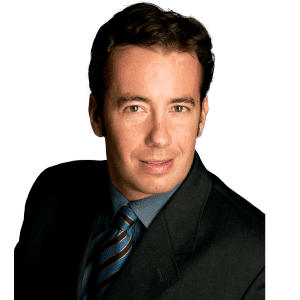
Dr Frati Cosmetic Surgery was established by internationally renowned surgeon to the stars Dr Riccardo Frati. Dr. Frati has featured on ITV’s This Morning, GMTV, featured in The Times, The Daily Mail, The Independent, The Daily Star, The Sun, FHM and 10 Years Younger; with countless mentions in celebrity magazines, online magazines and makeover reveals.
Types of Rhinoplasty on offer at our Manchester Clinic
Located in St. John Street, Manchester, Dr. Frati is one of the most prolific and experienced doctors in the field of Rhinoplasty – a type of surgical procedure that aims to alter the shape or appearance of the nose. Dr. Frati offers two types of Rhinoplasty in Manchester:
Open and Closed Rhinoplasty
- Open Rhinoplasty is a more extensive surgery which involves lifting up the skin on the nose and removing any excess cartilage for reshaping purposes. This technique leaves visible scarring, but it allows for greater accuracy when reshaping during surgery.
- Closed Rhinoplasty is often chosen by patients who need less drastic alteration, as small incisions are made up through the nostrils to conduct minor rhinoplasties. Due to its minimally invasive nature, this method requires less time in recovery and leaves less noticeable scarring than Open Rhinoplasty does.
When you have your initial consultation with Dr. Frati, he will assess your needs and wants in order to determine which option would be best for you when undergoing a rhinoplasty procedure. He will take into account your desired outcome from this operation – whether it be to correct a medical issue or simply for aesthetic reasons – before deciding which type of rhinoplasty is best suited for you personally. If you’d like to read more about the differences between Open vs Closed Rhinoplasty, please visit our website where we have further information available on this subject matter.
Is Rhinoplasty in Manchester the best choice for me?
Determining whether to use our rhinoplasty Manchester service is the right choice for you requires much consideration. Rhinoplasty is a highly individual procedure. It is important to recognise it the above benefits are something that you are looking for, and if they are then the next steps in visiting our rhinoplasty Manchester Clinic may be right for you, however there are other things to think about when opting to undergo to a rhinoplasty procedure.
- Setting Realistic Expectations:
Having realistic expectations about the results of rhinoplasty is crucial. Dr. Frati and his Rhinoplasty Manchester team can provide a comprehensive assessment during your consultation, outlining the changes that are feasible and explaining how they may impact your overall facial harmony. This helps ensure that you have a clear understanding of what can be achieved through the procedure. - Physical and Emotional Preparedness:
Undergoing any surgical procedure, including rhinoplasty, requires both physical and emotional readiness. It is important to be in good overall health and approach the procedure with a positive mindset. Prioritising your well-being and being mentally prepared can contribute to a smoother and more successful rhinoplasty experience. - Official Pre-Operative Consultation:
Scheduling a consultation with your surgeon, such as Dr. Frati, is essential. During this consultation, Dr. Frati will carefully evaluate your specific concerns, thoroughly assess your nasal anatomy, and discuss potential options and expected outcomes. His expertise and specialised opinion will provide you with valuable insights into what to anticipate from your rhinoplasty and whether it is the right choice for you at this time. If you have any questions or uncertainties about your rhinoplasty journey, do not hesitate to reach out to Dr. Frati’s Rhinoplasty Manchester team of clinicians, who will be happy to assist you.By emphasising realistic expectations, physical and emotional readiness, and the importance of a pre-operative consultation, Dr. Frati and his team ensure that patients are well-informed and prepared for their rhinoplasty journey.
Book your FREE Consultation today!
Why Choose Dr. Frati as my Rhinoplasty Manchester Surgeon?
Choosing Dr. Frati as your Rhinoplasty surgeon in Manchester can offer several compelling reasons:
- Specialisation in Rhinoplasty: Dr. Frati is a specialist in rhinoplasty, with extensive experience and expertise in performing nasal procedures. His specialization ensures that you are receiving care from a surgeon who is dedicated to this specific field.
- Exceptional Track Record: Dr. Frati has a strong reputation for achieving excellent results in rhinoplasty procedures. You can review his portfolio of before-and-after photos to gain confidence in his ability to deliver the aesthetic outcomes you desire.
- Ethical and Patient-Centered Care: Dr. Frati is known for prioritising ethical principles and patient-centered care. He is committed to your well-being and satisfaction throughout the entire surgical journey.
- Customised Approach: Dr. Frati understands the importance of tailoring rhinoplasty procedures to each patient’s unique goals and facial features. He will work closely with you to achieve personal and harmonious results.
- Advanced Techniques: Dr. Frati is well-versed in the latest and most advanced surgical techniques for rhinoplasty, ensuring the most precise and effective procedures.
- Reduced Risk of Complications: Specialised surgeons typically have lower complication rates due to their advanced skills and knowledge in the specific procedure.
- Reputation and Trust: Dr. Frati has built a strong reputation and trust within the field of facial plastic and reconstructive surgery. You can research his credentials, reviews, and testimonials to gain confidence in your choice.
- Clear Communication: Dr. Frati maintains open and clear communication with his patients, ensuring that you understand the procedure, risks, and benefits. He will address all your questions and concerns.
- Familiarity with the Latest Technology: Dr. Frati is likely to have access to and experience with the most up-to-date technology and equipment, enhancing the precision and safety of the surgical process.
- Post-Operative Support: Dr. Frati and his team provide ongoing support and follow-up care to monitor your healing progress and address any post-operative concerns.
When choosing a rhinoplasty surgeon, it’s important to select someone who specialises in the procedure and is dedicated to achieving the best possible outcomes while ensuring your safety and satisfaction. Dr. Frati’s specialisation in rhinoplasty, along with his reputation for excellence and patient-centred care, makes him a strong choice for individuals seeking rhinoplasty in Manchester.
Your Rhinoplasty Consultation in Manchester
Dr. Frati places a high emphasis on actively listening to your objectives for the procedure. Collaboratively, you and Dr. Frati will collaborate to define the ideal nasal aesthetics that complement your overall facial features. To augment this process, 3D imaging may be incorporated. Additionally, Dr. Frati will conduct a thorough evaluation of your medical history, any prior surgical interventions, your overall health, allergies, and your current medication regimen, if applicable.
Rhinoplasty related questions which Dr Frati may ask you
Do you have any medical conditions like diabetes or hypertension?
Are you in good overall health without chronic medical conditions?
Are you currently taking any medications, and do you have any known allergies?
Have you undergone any prior surgeries, and were there any complications?
What are your desired outcomes for the rhinoplasty procedure?
Do you engage in smoking or alcohol consumption, and if so, to what extent?
Leveraging his wealth of experience, Dr. Frati will suggest the most suitable procedure or a tailored combination of procedures to attain the results you seek. He will also provide a comprehensive explanation of potential risks and complications. If you prefer, you can request to examine a set of before-and-after rhinoplasty images. While these images can offer an initial glimpse into the potential outcomes of the surgical journey, it’s crucial to regard them as informative references, as they do not ensure an exact replication of any specific surgical outcome.
Rhinoplasty related questions you may want to ask Dr. Frati
How can I determine if a rhinoplasty is a suitable option for me?
Which technique is preferable: the open or closed approach?
If I’m not a candidate for a surgical procedure, should I consider a non-surgical rhinoplasty?
Is there a significant amount of post-procedure pain to anticipate?
What level of scarring is typical after the procedure?
Could you describe the recovery process and offer guidance for achieving optimal results during the healing period?
Am I maintaining realistic expectations regarding the desired outcomes?
Given my specific concerns, how many similar procedures have you performed in the past?
May I review before-and-after rhinoplasty images that are similar to my case?
What should I do if the results fall short of my expectations?
In about 25% of consultations, Dr. Frati may advise against a Manchester rhinoplasty procedure. This underscores the ethical principles and professionalism upheld by all the surgeons at Dr. Frati Cosmetic Surgery. Our primary commitment is to healthcare, and our clinical judgments remain entirely unaffected by commercial interests.
The primary aim of the consultation is to equip every patient with the knowledge and insight necessary to make informed and thoughtful decisions regarding the potential for a Rhinoplasty Manchester procedure. Dr. Frati’s role is to facilitate this decision-making process, transforming the consultation into a collaborative meeting between two experts: yourself and Dr. Frati.
Rhinoplasty FAQs
How much is Rhinoplasty?
Depending on many factors such as open or closed rhinoplasty's and also the bespoke requirements of each patient, you can expect rhinoplasty costs to start at £8,000 for closed and £10,300 for open rhinoplasty.
Is Rhinoplasty Surgery risky?
Every surgery is risky, period. There is always a risk of a reaction to anaesthesia for example, or internal bleeding, even infection of the operated area - unfortunately this is the nature of surgery. However, Dr. Frati is one of the best qualified surgeons in the UK and with this comes the mineralisation of risk, something to really take into account when choosing your surgeon.
How long does it take to recover from Rhinoplasty?
Whilst we would recommend to take around 2 weeks off work for recovery, it may take up to 6 months for swelling to completely disappear.
How long does Rhinoplasty surgery take?
Normally, Rhinoplasty surgery takes around 2-3 hours to complete
What's the difference between Male and Female Rhinoplasty?
Rhinoplasty is a widely performed cosmetic surgery procedure for both women and men. Notably, in the UK, it stands as the most frequently sought-after cosmetic surgery among men.
This procedure incorporates recognised surgical techniques suitable for both men and women, although gender differences in nasal structure yield distinct treatment goals. These structural distinctions often lead to different objectives for each gender.
Patients opt for rhinoplasty for various reasons, including addressing functional issues like breathing difficulties, enhancing the nose's aesthetics in harmony with their facial features, boosting self-confidence, and rectifying facial asymmetry. Common nasal irregularities include dorsal humps, bulbous or boxy tips, septal deviations, droopy nasal tips, narrow or wide noses, and noses deviated due to injury. The rhinoplasty surgeon's primary role is to identify the distinguishing features between male and female noses and devise surgical strategies to correct these abnormalities.
In men, rhinoplasty frequently involves achieving a straighter angle, enhancing definition, and reducing bulbous features. This results in a more pronounced appearance that complements the overall facial aesthetics. Many men also seek rhinoplasty to correct nose deviations from past injuries or to smooth out localised irregularities.
Conversely, women often opt for more subtle, less conspicuous changes to maintain facial balance. A commonly requested procedure is to reduce the appearance of a droopy nasal tip, often associated with a dorsal hump. Our surgeons, for both men and women, are skilled in addressing individual nasal concerns that hold personal significance. Typically, men seek a more chiseled or defined nose without excessive narrowing that could create a pinched nasal tip. The art of rhinoplasty surgery lies in tailoring each procedure to the patient's unique anatomy to help them achieve their objectives.
In many instances, there are marked differences in nasal structure between men and women. Women often have shorter noses and thinner skin, while many men possess thicker, more sebaceous skin. This thicker skin can lead to a larger, bulbous nasal tip, a feature more common in men and sometimes associated with a condition called rhinophyma.
The global COVID-19 pandemic has resulted in a surge of video conferencing, making many men more self-conscious about their appearance during these virtual interactions. Rhinoplasty distinguishes itself from other cosmetic surgeries by not only enhancing aesthetics but also improving the nose's functionality to restore overall facial balance. Patients, particularly men, who undergo rhinoplasty often report heightened self-confidence, leading to increased comfort in their appearance during video calls.
Male nose job surgery can be combined with other facial procedures, with the most prevalent combination being chin augmentation using an implant to achieve a more defined and stronger chin profile in addition to rhinoplasty.
As one of the UK's most reputable private rhinoplasty units, Dr. Frati is proficient in a range of rhinoplasty techniques, including open rhinoplasty, closed rhinoplasty, septo-rhinoplasty, rhino tip surgery, ultrasonic rhinoplasty, and revision rhinoplasty.
How do I prepare for Rhinoplasty?
Preparation for rhinoplasty, involves several crucial measures to facilitate a smooth surgery and a comfortable, speedy recovery. Here are key steps that patients should take in readiness for rhinoplasty:
- Consultation with a Qualified Plastic Surgeon: It's essential to consult with a seasoned plastic surgeon experienced in rhinoplasty, such as Dr. Frati. The surgeon will assess the patient's unique case, discuss their surgery objectives, and provide a comprehensive overview of the procedure, including potential risks and complications.
- Medical Evaluation: Patients must undergo a medical evaluation to ensure they are in good health and eligible for safe surgery. Dr. Frati will review your medical history, conduct a physical examination, and order any necessary lab tests.
- Smoking Cessation and Medication Review: Smoking can impede the healing process, so patients should quit smoking at least six weeks before the surgery. Additionally, certain medications, such as aspirin and non-steroidal anti-inflammatory drugs (NSAIDs), should be avoided, as they can elevate the risk of bleeding.
- Arrange Post-Operative Care: You should make arrangements for post-operative care, including transportation home after the surgery and having someone to stay with them for the initial few days to assist with tasks like bathing and dressing.
- Adherence to Pre-Operative Instructions: Dr. Frati will furnish the patient with detailed pre-operative instructions, covering dietary and beverage guidelines, pre-surgery preparation, and post-surgery wound care. Adhering closely to these instructions is crucial for a smooth recovery.
- Understanding the Recovery Process: The recovery following rhinoplasty can span several weeks. You should familiarise yourself with what to expect during this phase and plan accordingly. Swelling and bruising are normal post-surgery effects, and activities such as sports, heavy lifting, and exercise should be avoided for at least two weeks.
- Realistic Expectations: It is paramount for patients to harbour realistic expectations regarding the surgery's outcomes. It is important to comprehend that the final results will only become visible once the swelling has entirely subsided.
By following these steps, you can effectively prepare for rhinoplasty, ensuring a smooth surgical experience with Dr. Frati and a comfortable, expedited recovery.
What scars will I have after Rhinoplasty?
The type and location of scars resulting from a nose job (rhinoplasty) are contingent on the specific technique employed by Dr. Frati. In an "open" rhinoplasty, an incision is made across the columella (the skin between the nostrils), enabling the surgeon to lift the skin from the underlying nasal structures. This grants access to the underlying cartilage and bone for necessary adjustments. In a "closed" rhinoplasty, all incisions are internal, minimising visible scarring. Nevertheless, the chosen technique will also consider individual cases, patient requirements, and Dr. Frati's preference.
Following the surgery, incisions are closed with sutures, and the healing process spans several weeks to months. Once healing is complete, most scars are concealed within the natural creases of the nose, making them inconspicuous. Nonetheless, it's important to bear in mind that the final results of the surgery may not be immediately apparent. It may take several months for swelling to subside and for the definitive shape of the nose to emerge.
It's essential to acknowledge that scarring is an inherent component of any surgical procedure. While all possible efforts are made to minimise scarring, there is no absolute guarantee that scars will remain entirely imperceptible. Therefore, it is crucial to discuss potential scarring with Dr. Frati before opting for the surgery.
Rhinoplasty Anaesthesia options
During Rhinoplasty Manchester surgery, anaesthesia is administered to ensure the patient’s comfort and freedom from pain throughout the procedure. Various anaesthesia options are available for rhinoplasty in Manchester, and the choice depends on the patient’s individual needs and preferences.
Here are the most common anesthesia options used during rhinoplasty:
- Local Anaesthesia:
- Local anaesthesia involves the direct injection of a numbing agent into the surgical site.
- It is typically used for minor procedures where the patient does not require full unconsciousness.
- Local anaesthesia is often complemented with IV sedation, a mild form of anesthesia that induces relaxation and drowsiness.
- IV Sedation:
- Administered through a vein, IV sedation is a gentle form of anaesthesia that induces drowsiness and relaxation while allowing the patient to respond to commands and maintain independent breathing.
- IV sedation is frequently combined with local anaesthesia.
- General Anaesthesia (Total Intravenous Anaesthesia – TIVA):
- General anaesthesia, referred to as TIVA when administered intravenously, induces a state of sleep and unconsciousness during the procedure.
- This type of anesthesia is typically reserved for more complex surgeries or patients who cannot tolerate the procedure with IV sedation or local anesthesia.
The choice of anaesthesia is determined by the patient’s specific requirements and preferences, as well as the complexity of the surgery. Factors such as the patient’s medical history, current health conditions, and Dr. Frati’s recommendation are considered when selecting the most suitable anaesthesia option. Ultimately, the patient will collaborate with an anesthesiologist to make the best decision.
It’s crucial to emphasise that, regardless of the chosen anaesthesia type, the patient will be under continuous monitoring by an anaesthetist throughout the procedure to ensure their safety and comfort.
Are there any Risks to Rhinoplasty in Manchester?
When considering rhinoplasty in Manchester, it’s essential to acknowledge that, like any surgical procedure, inherent risks are involved. However, selecting a highly reputable and experienced surgeon can significantly reduce these risks and lead to a successful outcome. Dr. Frati’s renowned reputation is founded on his expertise, utilisation of cutting-edge techniques, and meticulous post-operative care, making him an outstanding choice for patients seeking rhinoplasty in Manchester.
One of the primary risks associated with Manchester rhinoplasty is the potential for complications during or after the procedure. These complications may include bleeding, infection, adverse reactions to anesthesia, or suboptimal wound healing. However, under the care of an experienced surgeon like Dr. Frati, who is well-versed in the latest advancements in rhinoplasty techniques, the likelihood of encountering such complications is significantly reduced.
Another risk to consider relates to the possibility of unsatisfactory aesthetic results. Nonetheless, Dr. Frati’s stellar reputation and extensive experience in rhinoplasty endow him with a high degree of skill in achieving outcomes that are both natural and harmonious, aligning with each patient’s distinctive facial features and aspirations.
To further minimise risks, Dr. Frati places great emphasis on meticulous aftercare. He diligently monitors patients’ progress and provides necessary guidance throughout the healing process. This personal approach ensures an optimal recovery and minimises the potential for complications.
Rhinoplasty Faster Healing Tips
There are several steps you can take to help speed up your rhinoplasty recovery period, these can include:
Adhere to Medication Regimen: Dr. Frati may prescribe pain medication and antibiotics to manage pain and prevent infection. It is important to adhere to the prescribed medication regimen and continue taking it until advised to do so by your surgeon.
Avoid Smoking: Smoking slows the healing process, triggers infections, and prolongs recovery time. It is recommended highly to not smoke during recovery from Rhinoplasty.
Attend Follow-Up Appointments: Dr. Frati will schedule aftercare appointments to check your progress and make sure the proper healing of your nose. It is imperative to attend these appointments.
Adhere to Postoperative Guidelines: Dr. Frati will furnish you with specific instructions for postoperative care, encompassing nose cleansing, sleeping positions, and scheduled follow-up visits. It is imperative to meticulously follow these instructions to mitigate complications and expedite the healing process.
Maintain an Elevated Head Position: Keeping your head elevated high reduces swelling. Use pillows to prop yourself up when sitting or lying down.
Utilise Cold Compresses: Applying cold compresses to your face can aid in reducing swelling and bruising. Ice packs or frozen peas wrapped in a cloth can be used for this purpose.
Refrain from Strenuous Activity: For at least two weeks following surgery, abstain from strenuous activities and heavy lifting. This precaution serves to minimise the risk of bleeding and swelling.
It is vital to remember, every one is different and recovery periods will vary from each patient, and please follow Dr. Frati’s recommendations for the best outcome!
